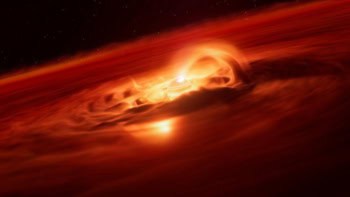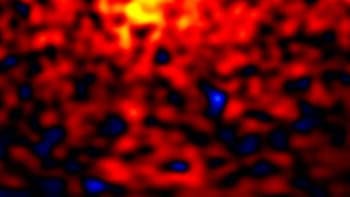Astronomers in the US have discovered the smallest extrasolar planet to date. The new planet, which is about one fifth the size of Pluto, is the fourth planet to be discovered orbiting around a pulsar called PSR B1257+12. The orbits of the planets around the pulsar are like a scaled-down version of the Solar System, even though the central stars in the two systems are completely different.
The discovery was announced by Alex Wolszczan of Pennsylvania State University and Maciej Konacki of the California Institute of Technology at a meeting in Aspen, Colorado, this week. Wolszczan also discovered the first exoplanets — three terrestrial-sized bodies orbiting around PSR B1257+12 — in 1992. Since then astronomers have found more than 100 exoplanets, mostly around conventional stars rather than extreme objects such as pulsars.
The orbits of the three planets discovered around the pulsar in 1992 were almost in exact proportion to the spacings between Mercury, Venus and Earth. The orbit of the new planet is close to the average distance from the Sun to the asteroid belt between the orbits of Mars and Jupiter. Wolszczan and Konacki say that the new planet could mark the fringes of the pulsar’s planetary system, just like Pluto marks the edge of ours.
“Surprisingly, the planetary system around this pulsar resembles our own solar system more than any extrasolar planetary system discovered around a Sun-like star,” says Konacki.
The existence of the pulsar planets provides strong evidence that Earth-mass planets can form just as easily as the much larger gas giants which are known to orbit around more than 5% of nearby Sun-like stars. However, the formation of Earth-like planets requires special conditions, making such planets a rarity, says Wolszczan.
Pulsars are rapidly rotating neutron stars that are formed from the collapsed cores of supergiant stars that have exploded as supernovae. Typically they measure just 20 kilometres across, but are extremely dense and send out highly regular beams of radio waves that are detected as a series of pulses on Earth.
The presence of an object like a planet will cause small changes in the arrival times of the pulses. The new planet was discovered with the Arecibo radio telescope in Puerto Rico.



